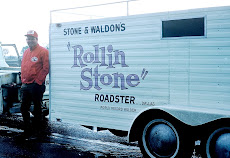


This is an update on the youngest grandson..
When we visited him on Sunday he was four and
a half months old. Jager is all boy..flirting with his
grandmonther...laughing with grandpa...and
eating up a storm. In an earlier post, I mentioned
how he had to return to the hospital for a minor
operation to correct a digestive problem. Since
then he has done nothing but grow. He is spoiled
rotten.. if his mother is not carrying him around,
it is his two older brothers or his dad. His brothers
are fourteen and sixteen so to say that Jager is
a surprise, is an understatement. The parents
say he is a good baby and hardly ever cries. I
was hoping for a little pay-back for his dad...
but for Christmas we are giving Jager a rocking
chair Pony.. when he rides it, it makes horsey
and clacking noises.. REAL LOUD!! I couldn't
find a drum set.....
















































